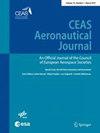小型航空发动机含氧混合燃料性能及烟尘排放试验研究
Q2 Engineering
引用次数: 0
摘要
摘要近年来的研究表明,喷气燃料与含氧燃料混合对废气烟尘的形成有影响。烟尘颗粒是一种环境危害,影响机场周围的空气质量,并可能影响冰晶成核,导致轨迹和冰云(卷云)的形成。这些冰云通过将热辐射反射回地球,同时对入射的阳光是透明的,从而显著地使大气变暖。许多调查集中在减少航空的二氧化碳足迹,但只有少数考虑到减少航空发动机的煤烟排放。本研究考察了喷气机A-1与含氧燃料混合的潜力,以减少航空发动机中烟灰颗粒的形成。为此,在艾利森250-C20B涡轴发动机上,在冷凝粒子计数器(CPC)的帮助下,研究了5 vol%和20 vol%的乙醇和5 vol%的聚氧亚甲基二甲醚3-5混合物(OME3-5混合物)的混合物。结果表明,在大多数情况下,烟尘颗粒的减少趋势大于混合燃料中含氧燃料的体积百分比。本文章由计算机程序翻译,如有差异,请以英文原文为准。
Experimental investigation of performance and soot emissions of oxygenated fuel blends in a small aero engine
Abstract Recent studies show that mixing jet fuel with oxygenated fuels has an impact on exhaust gas soot formation. Soot particles are an environmental hazard with an impact on air quality around airports, and possibly influencing ice crystal nucleation, leading to contrail and ice cloud (cirrus) formation. These ice clouds significantly warm up the atmosphere by reflecting heat radiation back to Earth and, at the same time, being transparent to incoming sunlight. Many investigations concentrate on reducing aviation’s CO 2 footprint, but only a few account for reducing soot emissions in aero engines. This study examines the potential of blending Jet A-1 with oxygenated fuels to decrease soot particle formation in aero engines. For this, blends with 5 vol% and 20 vol% of ethanol, and 5 vol% of a polyoxymethylene dimethyl ether 3–5 mix (OME3-5 mix) are investigated in an Allison 250-C20B turboshaft engine with the help of a condensation particle counter (CPC). The results show tendencies in soot particle reduction, which, in most cases, is larger than the volumetric percentage of the oxygenated fuel within the blend.
求助全文
通过发布文献求助,成功后即可免费获取论文全文。
去求助
来源期刊

CEAS Aeronautical Journal
Engineering-Aerospace Engineering
CiteScore
3.40
自引率
0.00%
发文量
53
期刊介绍:
The CEAS Aeronautical Journal has been created under the umbrella of CEAS to provide an appropriate platform for excellent scientific publications submitted by scientists and engineers. The German Aerospace Center (DLR) and the European Space Agency (ESA) support the Journal.The Journal is devoted to publishing results and findings in all areas of aeronautics-related science and technology as well as reports on new developments in design and manufacturing of aircraft, rotorcraft, and unmanned aerial vehicles. Of interest are also (invited) in-depth reviews of the status of development in specific areas of relevance to aeronautics, and descriptions of the potential way forward. Typical disciplines of interest include flight physics and aerodynamics, aeroelasticity and structural mechanics, aeroacoustics, structures and materials, flight mechanics and flight control, systems, flight guidance, air traffic management, communication, navigation and surveillance, aircraft and aircraft design, rotorcraft and propulsion.The Journal publishes peer-reviewed original articles, (invited) reviews and short communications.
 求助内容:
求助内容: 应助结果提醒方式:
应助结果提醒方式:


